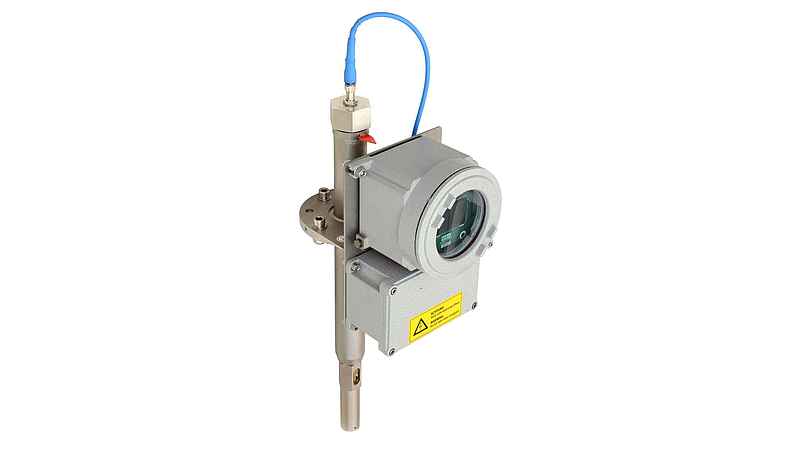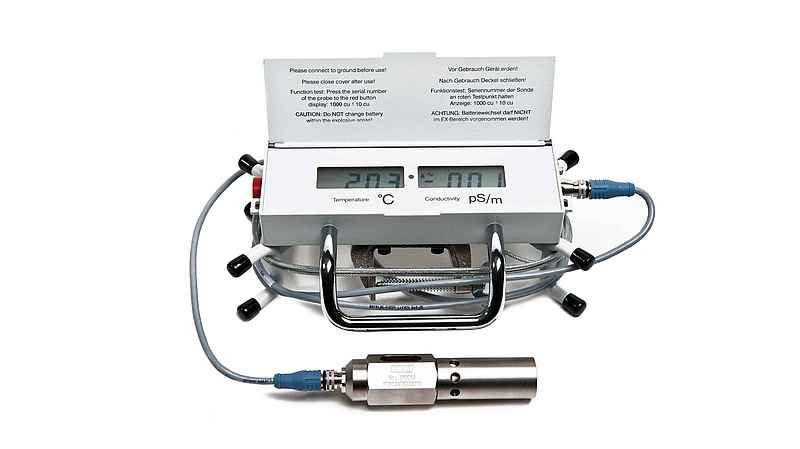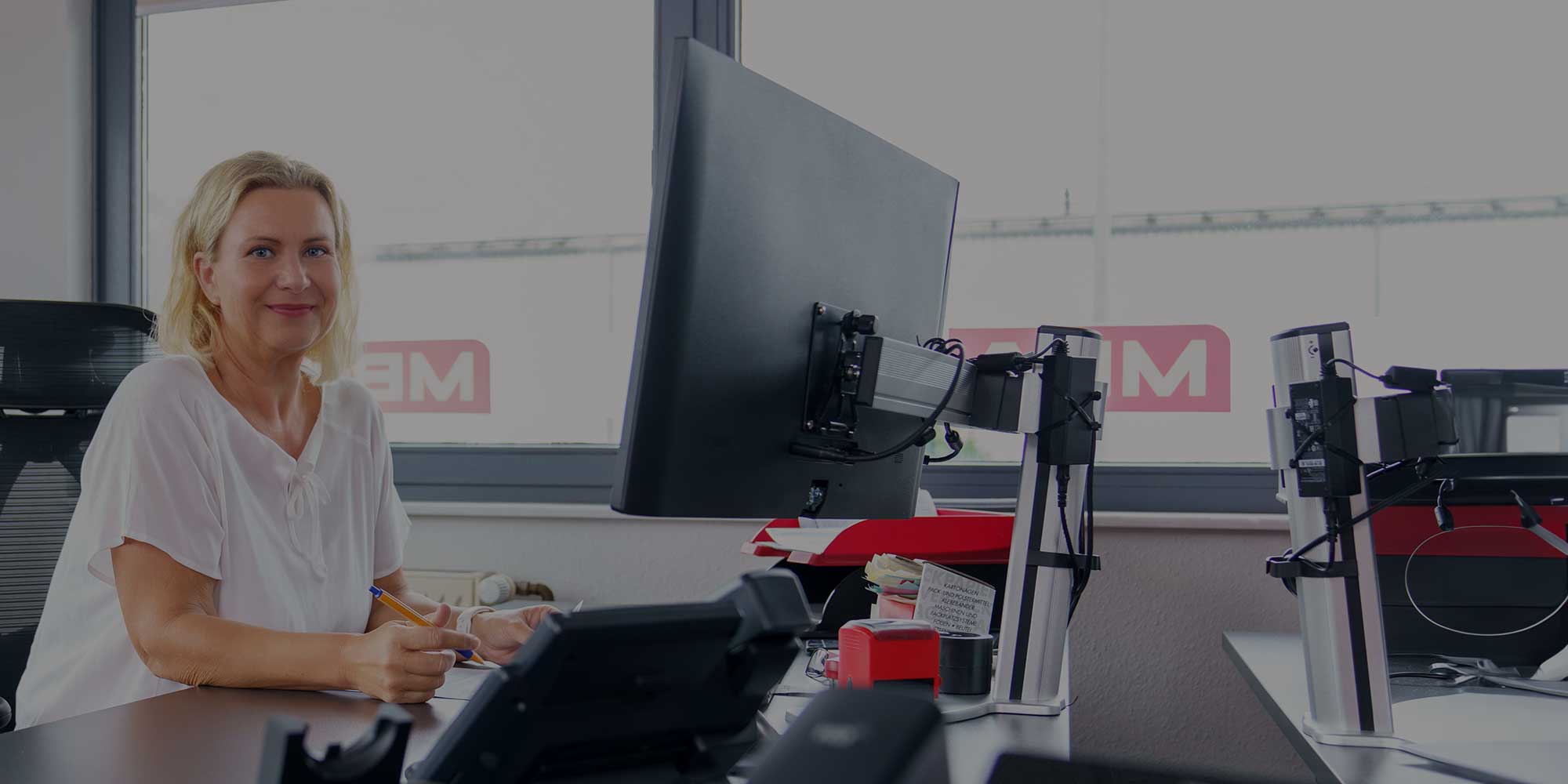For manual measurement and continuous in-line measurement
Light mineral oils are handled via pipelines on their way from the refinery to the airport. Rolled or hydraulic fluids flow via ring lines through pumps and filters to the storage tank. As these oils have low conductivity, the risk of electrostatic charging is very high. The highest safety regulations apply. The conductivity of the mineral oils must be checked regularly.
Our measuring devices are specially developed for conductivity measurement in light mineral oils such as aviation petrol (paraffin, Jet A-1) or rolling oil. They fulfil the requirements of ASTM2624 and are certified and approved.
Whether it is a manual measurement or a continuous in-line measurement in a pipeline, our devices and systems use proven technology that has been in use worldwide for many decades. Our experienced team is at your disposal to develop and implement customised solutions for your requirements.
Rely on MBA Instruments to fulfil your measurement requirements in demanding environments while maintaining the highest safety standards.
The MBA conductivity measurement methods
Whether as a handheld or continuous in-line measurement, MBA measuring instruments provide precise and accurate measurements of electrostatic conductivity, both for stationary applications and for situations where mobile testing is required. Thanks to innovative technologies, we can ensure that potential risks associated with electrostatic charging can be detected and minimised at an early stage.
Continuous conductivity measurement
By installing special sensors or probes in the liquid flow, conductivity can be measured continuously. These sensors continuously measure the electrical resistance of the liquid as it flows through the pipe. Based on the measured values, additives can be added according to the principle "as much as necessary - as little as possible".
Mobile conductivity measurement
For mobile conductivity measurement, a portable measuring device equipped with a conductivity probe is used. The probe is immersed in the liquid to be measured. The measuring device generates a weak electric current between the electrodes of the probe. The liquid, which contains dissolved ions, conducts the current.
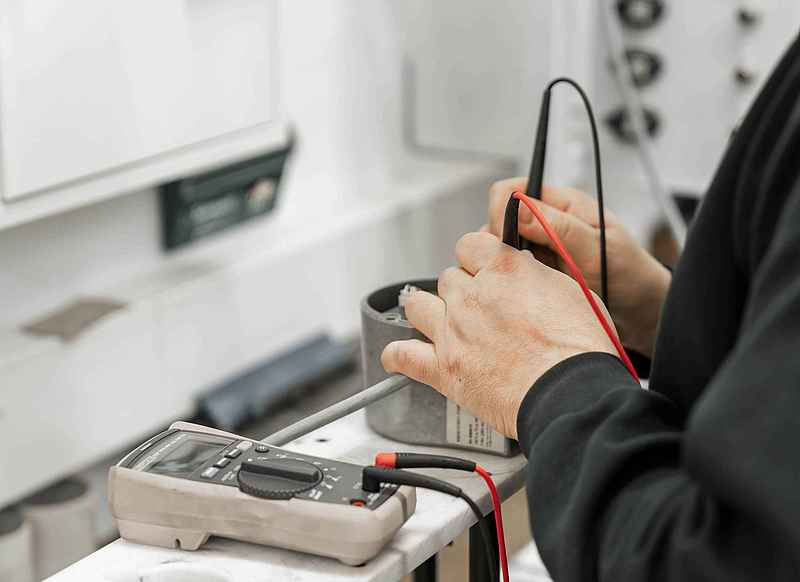
DAkkS calibration of the measuring devices
As a result of various stresses, for example thermal or mechanical, measuring devices age over the course of their service life. In order to obtain reliable measured values, the measuring instruments must be electronically adjusted.
The calibration of MBA conductivity sensors enables consistently accurate measurements of your processes and ensures compliance with industry-specific regulations and all applicable quality standards.
Our conductivity measurement instruments are also accredited to the highest standards, ensuring the highest accuracy and reliability in your applications.
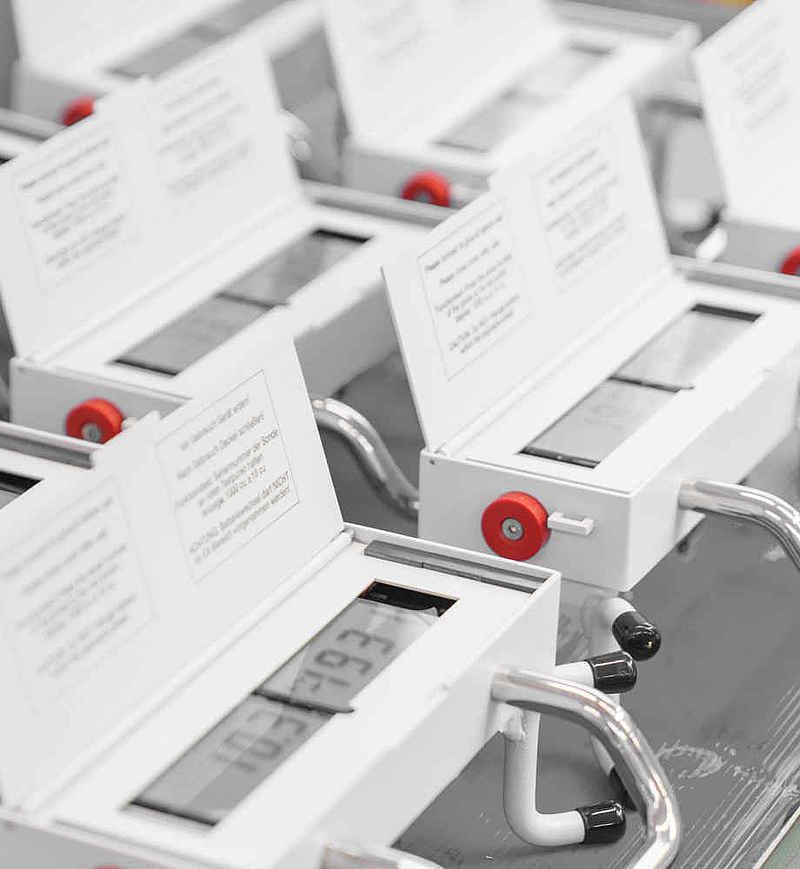
Precise conductivity control in industrial processes
MBA conductivity measurement precisely monitors and controls conductivity in mineral oils and rolling oils to avoid electrostatic risks and potentially explosive situations.
For quality purposes, the conductivity of oil is often kept within the narrow measuring range of 5 to 2,000 pS/m. Low conductivity is associated with a high risk of electrostatic charging. If the conductivity is above 400 pS/m at a temperature of 20 °C, the potential for damage to the system due to electrostatic charging and discharging is extremely low. If the conductivity of the lubricant is lower, the possibility of micro-sparks increases significantly.
Monitoring this important safety parameter is therefore essential for industrial handling. The conductivity measuring devices use the flow velocity within the pipeline to provide a precise, up-to-date value of the conductivity and temperature. Additives are added to prevent electrostatic charging, sparking and possible explosions. These additions can be controlled extremely precisely with the help of measuring instruments.
Conductivity measurement plays an important role in various industrial applications. MBA Instruments is known for providing high quality solutions in this field. Nevertheless, there are challenges in conductivity measurement that can affect the precision and reliability of the measurements.
The use of conductivity sensors in corrosive environments can lead to premature wear of electrodes and sensors. The choice of corrosion-resistant materials and regular maintenance are crucial here.
In applications with heavily contaminated or abrasive media, deposits and fouling can occur on the sensors, which can affect the accuracy of the measurements. This requires appropriate sensor cleaning or maintenance.
MBA Instruments offers specialised conductivity sensors tailored to the specific requirements of its customers. Working with experts and following best practice is crucial to ensure accurate and reliable conductivity measurements, especially in demanding industrial environments.
Conductivity plays an important role in many applications: for process control, product monitoring or leak detection.
The choice of sensor depends on the area of application and the conductivity range. There are two technical approaches to measuring conductivity: inductive and conductive. Conductivity measurement with conductive sensors is the most commonly used method for conductivity measurement. It is based on measuring the electrical resistance of a solution. Conductometers use electrodes to measure the current flow in the liquid and determine the conductivity from this.
They have two opposing electrodes that are in direct contact with the test sample. A voltage is applied to the electrodes so that a current flow is generated in the medium.
Conductivity measurement is based on determining the ohmic resistance of the medium to be measured. The electrical resistance depends on the size of the electrodes and the distance between them. Inductive conductivity sensors consist of two electromagnetic coils enclosed in a plastic sheath. An alternating voltage is applied to one coil, which generates a voltage in the other coil.
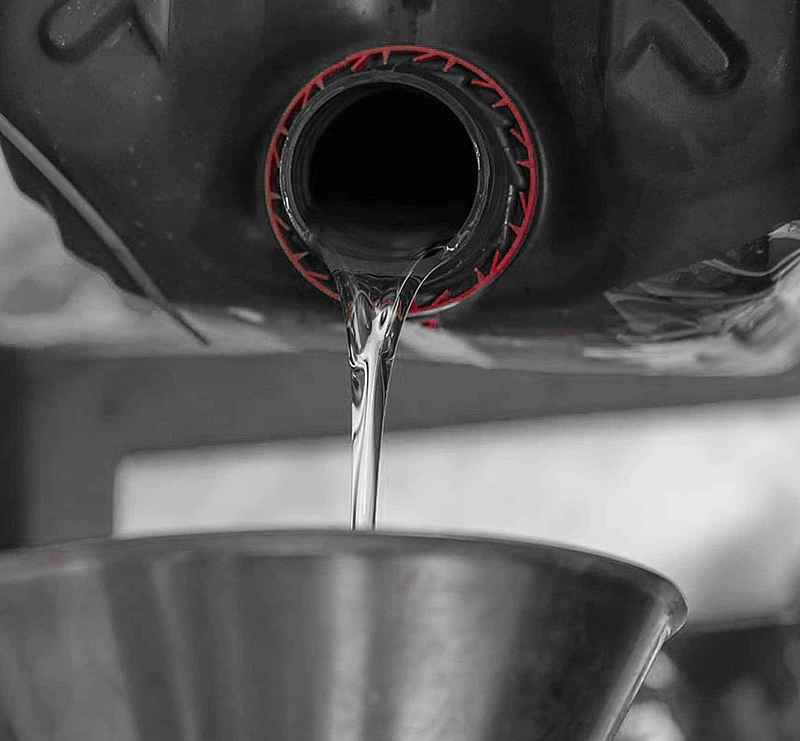
Electrostatic discharge in light petroleum products
Under specific conditions, it is possible for lubricants to experience electrostatic charging.
This situation can lead to intense discharges, which can potentially cause damage to components and lead to the increased formation of oil sludge. Micro-sparks of up to 1,000 °C are generated, posing a potential explosion hazard. The probability of micro-sparks is higher in areas with different material combinations. Measuring the conductivity of the lubricant proves to be an effective method of preventing potential machine damage and the ageing process of the oil.
Electrical conductivity is a measure of the electrostatic chargeability of a substance. Lubricants - such as light oils - are generally only slightly conductive. The conductivity depends on the temperature of the lubricant, the additives added and impurities in the lubricant caused by wear metals or water.
Areas of application for MBA conductivity measurement
Measuring electrical conductivity is important in various industries, especially where the presence of flammable liquids or gases with potentially explosive properties poses a risk.
In the production, processing and storage of oil, gas and petrochemical products, measuring electrostatic conductivity is important to prevent explosions and fires.
When handling chemicals that are highly flammable or have explosive properties, monitoring electrostatic conductivity is crucial to ensure safety.
Electrostatic conductivity is measured in tank farms and fuel processing plants in order to minimise accidents and fires during the storage and transport of fuels. The measuring devices are used along the supply chain: in the refinery, at the pumping stations on the pipeline, in the upstream tank farm, in the supply line at the airport and at the refuelling facility on the airport premises. The measuring method enables all measured values to be recorded so that the legally prescribed control can be reliably verified at every delivery step.
In environments where flammable substances such as oils and alcohols are used, measuring electrostatic conductivity is important to ensure product safety.
In the manufacture of medicines and chemical products, it is important to control electrostatic conductivity in order to prevent inflammation or contamination.
In energy generation and distribution, especially when handling flammable gases and liquids, the measurement of electrostatic conductivity is of great importance.
MBA is your partner for reliable results
Precision and reliability are the fundamental challenges of conductivity measurement, which MBA has been successfully solving for more than 50 years. Optimised for special requirements and applications, MBA's conductivity measuring devices are used in a wide variety of liquids and environments - for reliable measurement results and precise action triggers.
The basis for precise conductivity measurement: modern technology and many years of experience
Our systems for continuous and stationary conductivity measurement of flowing light oils can be used in a wide variety of areas - from rolling mills and tank farms to airports. Whether as manual or continuous in-line measurement in the pipeline: The technology of our devices and systems has proven itself in worldwide use for several decades.
Talk to us about your requirements!
